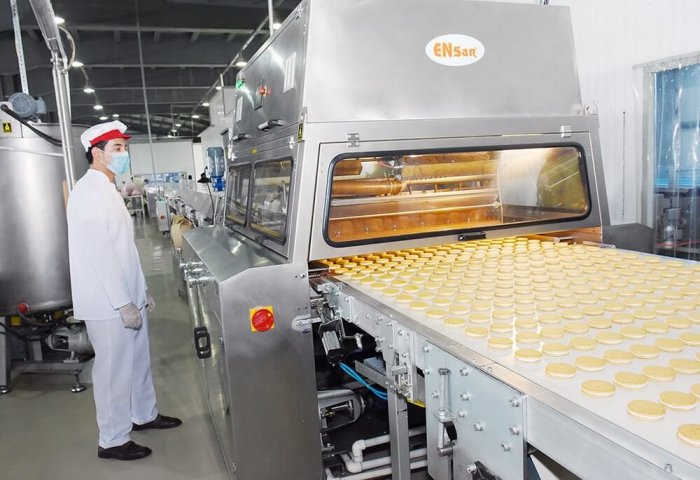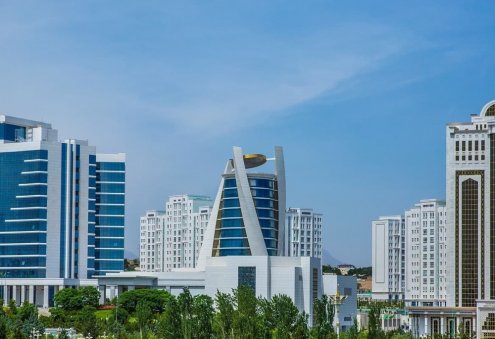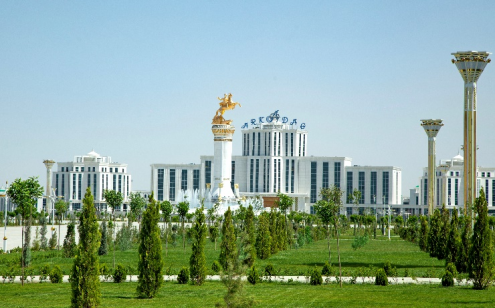The stabilization of the global economy in 2021 has a positive effect on the indicators of Turkmenistan's foreign trade, economic expert Valentin Trapeznikov said in a commentary published on CentralAsia.news website in mid-July.
The expert noted that during the first four months of 2021, the physical volumes of Turkmenistan’s export of natural gas in comparison with 2020 increased by 24.1%, and the export of petroleum products and gasoline produced from natural gas – increased by 23.5% and 50.4%, respectively.
In the export of fuel and energy resources, there is also a tendency towards an increase in supplies of petroleum coke and petroleum products. Their exports surged by 124.7% and 26.8%, respectively.
Valentin Trapeznikov also highlighted significant structural changes in foreign trade that took place in 2021. During the January-April period, the volume of Turkmenistan’s non-oil exports increased by 69.1% compared to four months of the previous year and amounted to $546.8 million. The share of non-oil products in total exports increased from 12.8% in 2020 to 21.7%.
At the same time, the growth rate of the value of export supplies of electricity amounted to 55.5%, sulfur - 3 times, fertilizers - 36.5%, glass and glass products - 105.2%, pipes, hoses and fittings made of plastic - 4 times, textile materials - 63.2%, iodine - 4.8%, wool - 49.8%, licorice root extract - 57.9%, flour confectionery - 3.8 times, vegetables - 102.8%.
According to the expert, the bulk of external supplies of vegetables are tomatoes – about 87%. During the period, Turkmenistan exported about 37.6 thousand tons of tomatoes worth $41.4 million. More than 92% of tomato exports went to the EAEU countries (Armenia, Belarus, Kazakhstan, Kyrgyzstan and Russia).
During the four-month period, Turkmenistan’s total volume of imports amounted to more than $1.69 billion, a year-on-year decrease of 7.4%. At the same time, the import of technological equipment increased by 23.7%, while the import of raw resources and materials decreased by 19.4%. Imports of non-food consumer goods decreased by 5.2%, and foodstuffs - by 11.5%.
According to the expert, there have also been significant changes in the geographic structure of Turkmenistan’s foreign trade. During the period, the country’s foreign trade turnover with the EAEU countries decreased by 9%. However, this was due to a significant decrease in imports from Russia – by 46.5%. For the rest of the EAEU countries, there is an increase in foreign trade turnover. In particular, Turkmen exports to Armenia increased 5 times, to Kazakhstan and Kyrgyzstan - about 2 times, to Belarus - by 22.6% and Russia - by 35%.
Turkmenistan also significantly increased its exports to Iran and Ukraine - by 5.6 times, the UAE and Turkey - by 3.9 and 1.9 times, respectively. At the same time, exports to China decreased by more than 21%. The country also decreased its external supplies to India and Azerbaijan.
The expert emphasized that the decline in imports is largely due to the implementation of import substitution programs in Turkmenistan. In particular, due to the increase in the production of building materials, agricultural crops, livestock products and food products in the country, the import of ferrous metals and products from them nearly halved. The country also decreased its imports of dairy products by 1.5 times, cheese and cottage cheese - 2.3 times, condensed milk - 1.7 times, meat and meat products - 1.7 times, rice - more than 11 times, wheat - almost 1.5 times, vegetables - 1.25 times, including onions and garlic - more than 1.5 times, potatoes - 13%. The import of tomatoes and cucumbers almost completely stopped.
Valentin Trapeznikov noted that significant changes have been taking place in the structure of Turkmenistan's foreign trade over the past year and a half, both in terms of product nomenclature and geographic orientation. This is due to changes in the needs of the economy in certain commodity items, as well as to the implementation of a whole range of socio-economic programs that determine the diversification of directions for the development of the country's economy and social sphere.


















